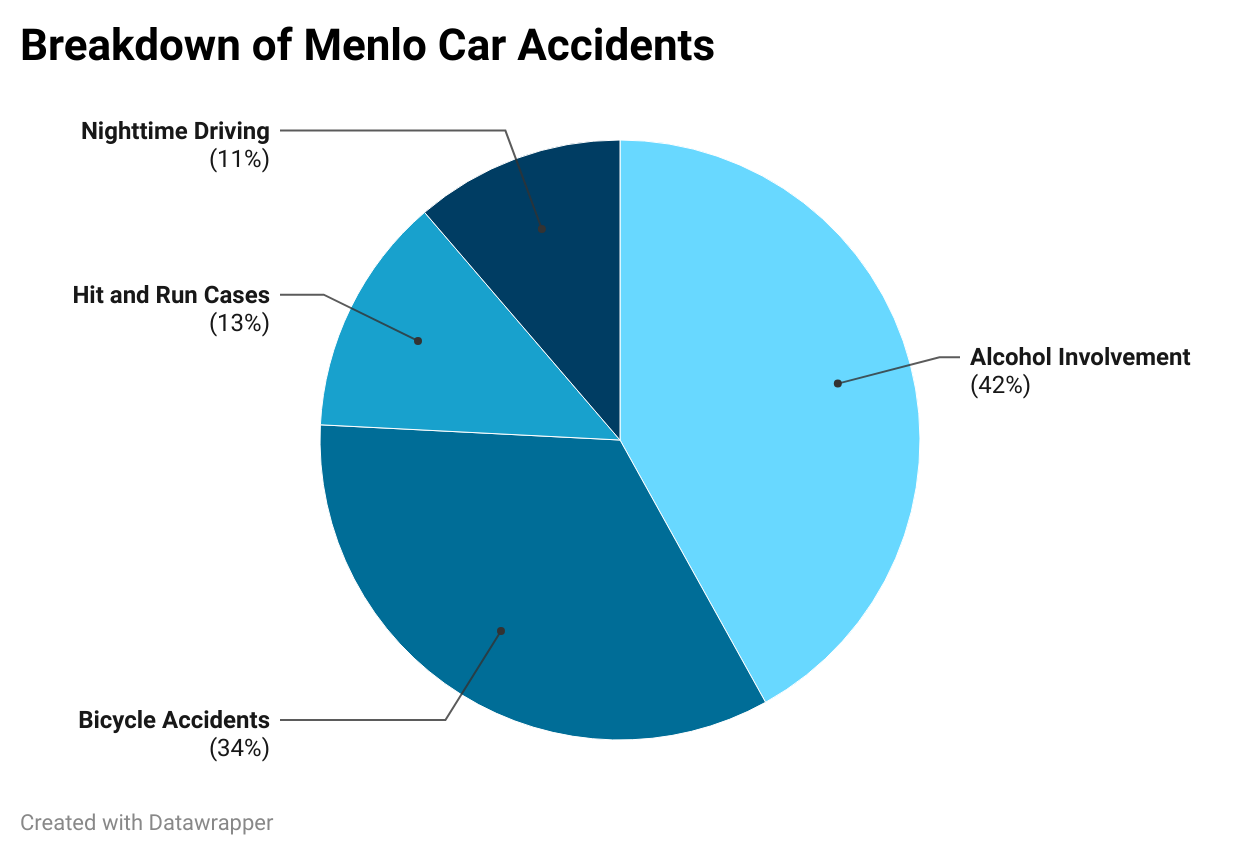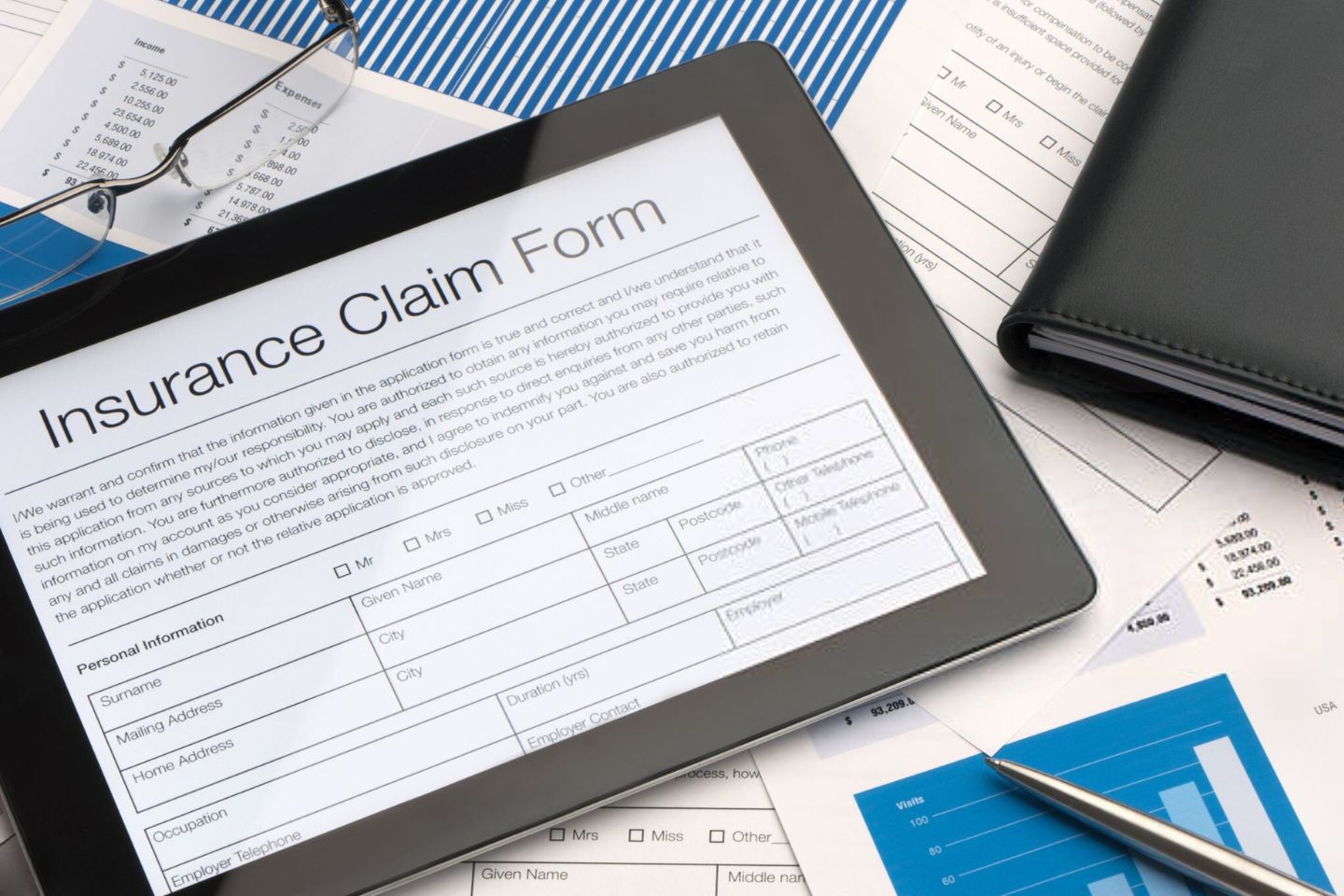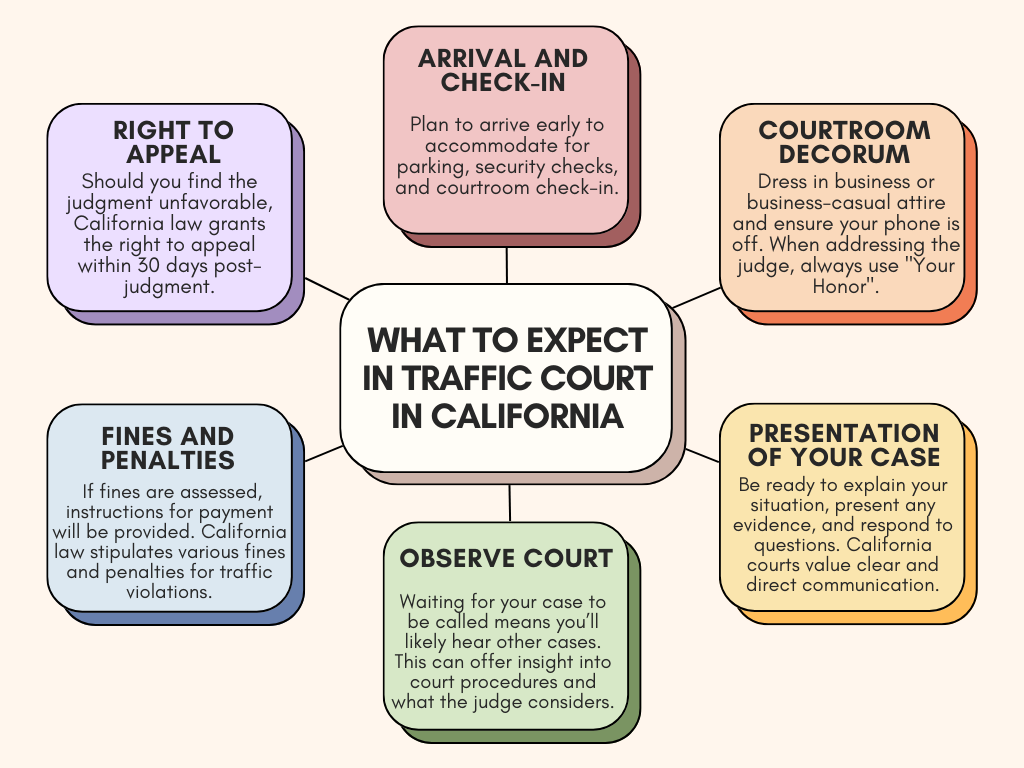If you’ve been involved in a Menlo car accident, understanding the local car accident laws is crucial for navigating the aftermath. The city’s roads have witnessed a significant number of incidents, with Menlo ranking 13th highest among comparable cities in California for crashes resulting in injury or death, according to the California Office of Traffic and Safety.
This statistic from 2020, highlighting 88 such incidents, emphasizes the importance of being well-informed about your legal avenues and the subsequent steps.
This blog aims to explain the legal processes following car accidents in Menlo. By focusing on the underlying causes of these accidents and guiding you through the complexities of the legal system, we aim to make this daunting journey more manageable.
Common Causes of Car Accidents in Menlo
With insights from the OTS 2021 report, we uncover the common causes of Menlo car accidents, benchmarked against 92 other cities in California with similar populations:


- Speed-Related Crashes: With 32 reported incidents, excessive speed stands out as a leading issue for local drivers.
- Nighttime Driving: Seven accidents occurred during nighttime, suggesting visibility and driver alertness are key concerns after dark.
- Hit and Run Cases: Not to be overlooked, there were 8 hit and run incidents, highlighting a concerning trend of drivers fleeing the scene.
- Alcohol Involvement: Alcohol-related crashes are a critical concern, underscored by 26 DUI arrests, shedding light on the need for stricter enforcement and awareness campaigns.
- Bicycle Accidents: Ranking 3rd for bicycle accidents, the 21 incidents reported put a spotlight on the urgent need for safer cycling conditions in Menlo.
For support in navigating your personal injury claim and securing the compensation you’re entitled to, get in with the Personal Injury Center. We will connect you to personal injury attorneys in your region.
Immediate Actions to Take After a Menlo Car Accident
If you find yourself in the unsettling aftermath of a car accident in Menlo, taking the right steps immediately can significantly impact your safety, legal rights, and compensation eligibility.
Here’s a structured approach based on California laws:
Ensure Safety
First and foremost, California Vehicle Code 22107 mandates that you do not suddenly stop or decrease speed on the road without first ensuring that such movement can be made safely. If involved in an accident, move your vehicle to a safe area if possible, to prevent further accidents and ensure safety.
Check for Injuries
Once safe, assess yourself and others for injuries. Immediate health concerns take precedence. California law requires offering reasonable assistance to those injured in an accident, as per Vehicle Code 20003.
Call 911
For any accident in Menlo involving injury, death, or significant property damage, it’s crucial to call 911. This ensures that you comply with Vehicle Code 20008, which requires reporting such accidents to the California Highway Patrol or local police department without delay.
Exchange Information
Vehicle Code 16025 requires all drivers involved in an accident to exchange information, including names, addresses, driver’s license numbers, vehicle identification numbers, and insurance details. This step is vital for the insurance claims process and potential legal
proceedings.
Document the Scene
Take photographs of the accident scene, including all vehicles involved, any visible damages, and relevant road conditions or signs. This documentation can be crucial for insurance claims and legal matters.
File a Police Report
If the police attend the scene, they will file a report. However, if police do not report to the scene, you are required under Vehicle Code 20008 to report the accident to the nearest California Highway Patrol or police station if there are injuries or fatalities. This report should be made as soon as possible but no later than 24 hours after the accident.
For more information on how to file a police report, you can watch this video.
Notify Your Insurance Company
California Vehicle Code 16020 requires all drivers to carry evidence of financial responsibility, usually in the form of an insurance policy. You must report any accident to your insurance company, ideally within 24 hours, to comply with your policy’s terms and facilitate the claims process.
Legal Options for Accident Victims in Menlo
After a car accident in Menlo, navigating the legal framework of California is crucial for victims seeking recourse. The state’s laws offer several pathways for recovery and justice. Below, we detail these options, explaining key legal concepts for clarity.
Personal Injury Lawsuit
Engaging in a personal injury lawsuit enables victims to aim for compensation that goes beyond what is typically covered by insurance. This legal route comprehensively addresses both tangible and intangible damages resulting from the accident.
Below are some of the key legal structures necessary to understand during a personal injury lawsuit:
- Statute of Limitations: California sets a two-year deadline from the accident date for filing personal injury lawsuits, per Civil Procedure Code 335.1. This lawsuit covers damages like medical expenses, lost wages, and pain and suffering.
- Comparative Fault Rule: This rule, outlined in Civil Code 1431.2, allows for damage recovery even if the victim was partly at fault. Compensation is adjusted based on the victim’s share of fault, promoting fairness by accounting for all parties’ negligence.
Filing an Insurance Claim


After a car accident, engaging with insurance is one of the first legal steps. It involves communicating with insurance providers to cover damages from the accident.
- Negotiating with Insurance Companies: In California, the driver who is at fault for the accident bears responsibility for damages. Victims can initiate claims with their own insurance or the at-fault driver’s insurer. This process involves presenting evidence of damages and negotiating compensation.
- Uninsured Motorist Claim: If the at-fault driver lacks insurance, victims can file a claim under their own policy, as per Insurance Code 11580.2. This provision helps ensure victims can seek compensation even when the at-fault party is uninsured.
Property Damage Claims
Property damage claims provide a mechanism for recovering costs associated with vehicle repairs and other property damage resulting from the accident.
- Filing a Claim for Vehicle Repairs: For damages to property, such as vehicle repairs, victims have three years from the accident date to file a claim, based on Vehicle Code 387. This time frame ensures victims have adequate time to assess and address property damages.
- Diminished Value Claim: After repairs, a vehicle might lose value. California recognizes the right to claim this loss in value, as guided by the California Jury Instructions (CACI No. 3903J). This claim compensates victims for the reduced market value of a repaired vehicle.
Wrongful Death Claims
In the unfortunate event of a fatality resulting from a car accident, California law provides a means for the deceased’s family or estate to pursue justice and compensation. Immediate family members or the estate have a two-year window from the date of the accident to file a wrongful death lawsuit, as per the California Code of Civil Procedure 377.60.
- Compensation for Emotional Losses: This aspect of the lawsuit acknowledges the non-economic impact on the survivors, including the pain of losing a loved one’s companionship, affection, and emotional support. While these damages are not easily quantifiable, they are recognized for their significant impact on the well-being of the family.
- Recovery of Financial Losses: Additionally, the lawsuit addresses the tangible financial void left by the deceased. This includes lost wages that the deceased would have earned, funeral and burial expenses, and any medical bills incurred as a result of the injury leading to death. This financial compensation aims to alleviate the economic burden placed on the family during this difficult time.
Small Claims Court
California’s small claims court is a straightforward option for handling smaller disputes after a car accident.
- For Minor Disputes: This court is ideal for claims not exceeding $10,000. It’s designed to fast-track the resolution process, making it easier for individuals to settle disputes without complicated legal procedures.
- Direct Handling: This approach facilitates a more direct and efficient dispute resolution, particularly suited for smaller claims where legal fees might outweigh the disputed amount.
If you’re struggling with a personal injury case, the Personal Injury Center is here to assist. We inform you about your rights and connect you with qualified local lawyers ready to fight for your compensation. Contact us to find the legal support you need.
What to Expect in Traffic Court in California
Navigating traffic court in California involves specific procedures and expectations. Here’s a streamlined overview, aligned with California laws and court practices:


- Arrival and Check-In: Plan to arrive early to accommodate for parking, security checks, and courtroom check-in. It’s crucial to know your courtroom location, often listed on the court’s docket or schedule.
- Courtroom Decorum: Dress in business or business-casual attire and ensure your phone is off. When addressing the judge, always use “Your Honor” to maintain the decorum expected in court.
- Presentation of Your Case: Be ready to succinctly explain your situation, present any evidence, and respond to questions. California courts value clear and direct communication. Evidence can include photographs, diagrams, and written documents relevant to your case.
- Observing Court Proceedings: Waiting for your case to be called means you’ll likely hear other cases. This can offer insight into court procedures and what the judge considers during deliberations.
- Fines and Penalties: If fines are assessed, instructions for payment will be provided. California law stipulates various fines and penalties for traffic violations, and adherence to payment schedules is mandatory.
- Right to Appeal: Should you find the judgment unfavorable, California law grants the right to appeal within 30 days post-judgment. This process is more complex and may require legal advice to navigate successfully.
Personal Injury Center provides information on legal rights and connects you with experienced lawyers in your area. If you’re facing a personal injury issue, contact us for help finding the right attorney to get the compensation you need.
Key Takeaways
|
FAQs
Where to Report a Car Accident in Menlo?
In Menlo, car accidents that result in injury, death, or significant property damage should be reported immediately to local law enforcement agencies. This includes the Menlo Park Police Department for incidents within city limits or the California Highway Patrol (CHP) if the accident occurred on a state highway. Additionally, California law requires that any accident involving injury or death be reported to the DMV within 10 days, using the SR-1 form, which is also a necessary step for accidents causing property damage over $1,000.
Can a Car Accident Cause a Bulging Disc?
Yes, a car accident can cause a bulging disc. The impact and force of a collision can exert significant pressure on the spine, leading to the displacement or bulging of disc material. This condition can result in back pain, numbness, or weakness in the limbs due to the bulging disc pressing against nerve roots. Medical evaluation and imaging tests like MRI are often required to diagnose this condition following an accident.
Are Car Accident Reports Public Records?
Yes, reports of car accidents are typically public records. People involved in the accident, their lawyers, or individuals with a valid reason can get a copy of the report from the local police department that prepared it. However, certain personal details might be omitted to safeguard privacy. The availability of these reports and the procedure to acquire them differ across various states and local areas, so it’s advisable to consult the relevant agency for specifics.



